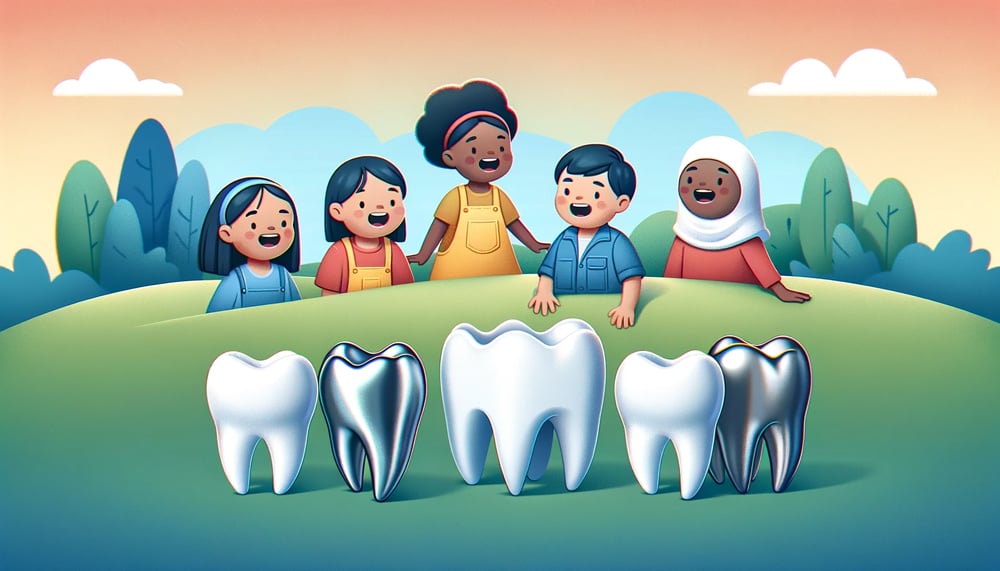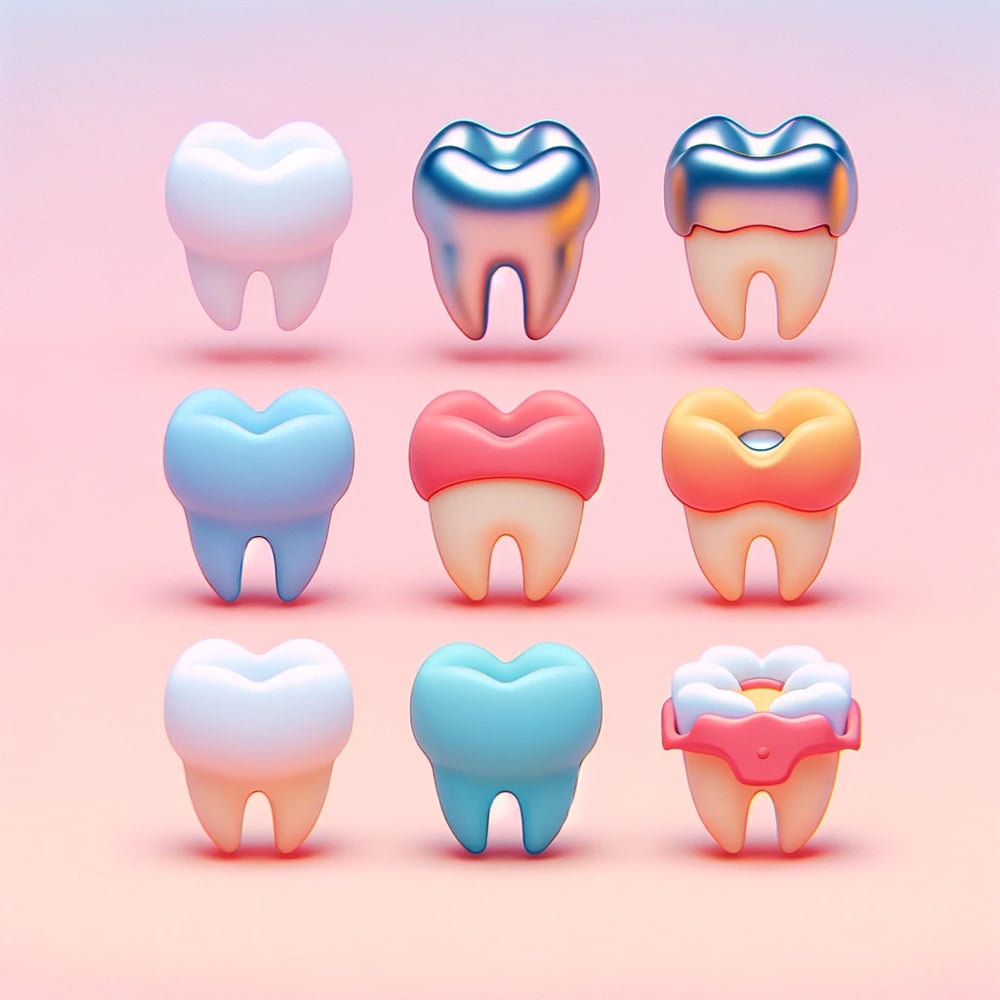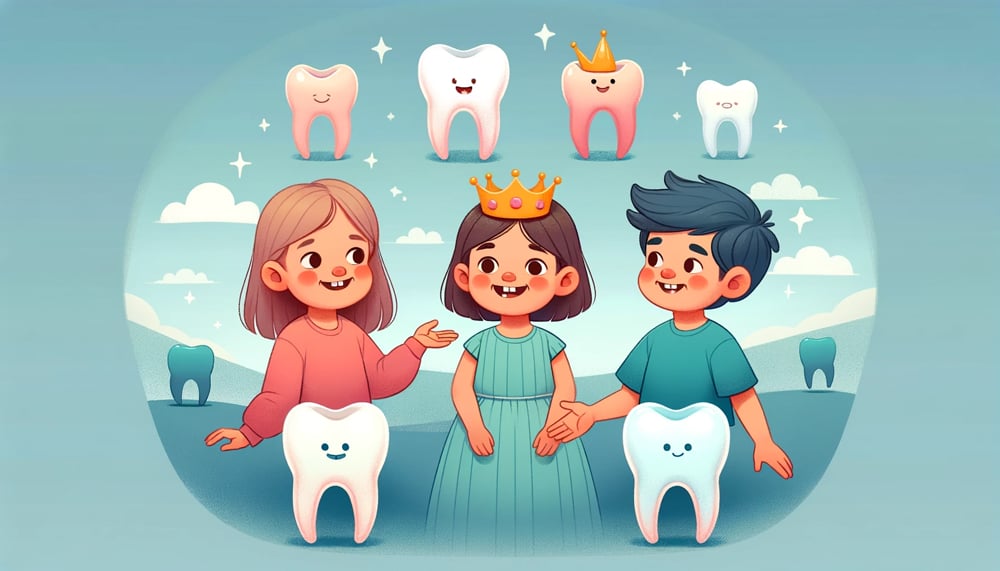The Rising Prevalence of Pediatric Dental Crowns
The oral health of children is a growing concern globally, especially considering the increasing instances of dental caries.
A staggering 18.6% of children aged 5-19 in the United States are affected by dental caries, according to the Centers for Disease Control and Prevention (CDC).
This statistic underscores a significant need for dental interventions, notably pediatric crowns, to manage and prevent further oral health issues.
Dental Caries in Children: A Closer Look
Dental caries, commonly known as cavities, are one of the most prevalent chronic diseases in children.
The high-sugar diets prevalent in modern lifestyles contribute significantly to this.
When cavities go untreated, they can lead to pain and infections and even impact children’s growth and school performance.
Understanding Pediatric Dental Crowns

Pediatric dental crowns serve as a crucial tool in pediatric dentistry, providing a robust solution for severely decayed or damaged teeth.
The Role of Crowns in Pediatric Dentistry
Unlike fillings that address smaller areas of decay, dental crowns cover the entire tooth.
This is particularly important for children’s molars, which are essential for proper chewing and alignment of permanent teeth.
Crowns help preserve the tooth’s structure and prevent further decay or damage.
Types of Pediatric Crowns

Pediatric dentistry has evolved to offer various types of crowns, catering to different needs and preferences.
Stainless Steel Crowns
The most commonly used crowns in pediatric dentistry are stainless steel. They are preferred for their durability and are typically used on back molars.
Advantages of Stainless Steel Crowns
- Durability: They withstand the forces of chewing.
- Cost-Effective: Generally covered by most dental insurance plans.
- Time-Tested: A long history of use in pediatric dentistry.
Cubic Zirconia Crowns
An alternative to stainless steel, cubic zirconia crowns are gaining popularity for their aesthetic appeal, especially for front teeth.
Benefits of Cubic Zirconia Crowns
- Aesthetic Appeal: They mimic the color of natural teeth.
- Biocompatible: Safe for children, with no known allergic reactions.
- Durability: Stronger than natural tooth enamel.
Preventing Dental Caries in Children

Preventive measures are key in reducing the incidence of dental caries and the subsequent need for pediatric crowns.
Oral Hygiene Practices
- Regular Brushing: Twice a day with fluoride toothpaste.
- Flossing: Daily to remove plaque between teeth.
- Regular Dental Check-ups: Every six months for professional cleaning and examination.
Diet and Nutrition
- Limit Sugary Foods and Drinks: Reducing sugar intake to prevent tooth decay.
- Healthy Snacks: Encourage fruits and vegetables over sugary snacks.
Conclusion
The prevalence of pediatric crowns is a direct response to the high rate of dental caries among children.
By understanding the types of crowns available and implementing preventive measures, parents can play a crucial role in ensuring their children’s oral health.
Regular dental visits, good oral hygiene, and a healthy diet are instrumental in preventing the need for such dental interventions.
With the right care, the incidence of dental caries and the need for pediatric crowns can be significantly reduced.
FAQs about How Common Are Pediatric Crowns
What are pediatric dental crowns?
Pediatric dental crowns are protective coverings placed over a child’s tooth that has been damaged by decay or injury. They help restore function and prevent further damage.
Why might my child need a dental crown?
A child may need a dental crown if they have a large cavity that a filling can’t repair, a tooth that is fractured or severely worn, or after a root canal treatment.
Are there different types of pediatric crowns?
Yes, there are mainly two types: stainless steel crowns for back teeth due to their durability and strength and tooth-colored crowns like cubic zirconia for front teeth for a more natural appearance.
How long do pediatric dental crowns last?
Pediatric dental crowns typically last until the baby tooth falls out. Their lifespan can vary based on the material used and the child’s oral habits.
Can a dental crown be placed on a baby’s tooth?
Yes, dental crowns are often placed on baby teeth to preserve them until they naturally fall out, ensuring proper spacing for the permanent teeth.

Dr. Mary G. Trice is a renowned pedodontist based in Queens, NY. With an unwavering dedication to children’s dental health. In addition to her clinical practice, Dr. Trice is the writer and manager behind the informative platform pediatricdentistinqueensny.com. Through this site, she offers valuable insights, tips, and resources for parents and guardians, aiming to bridge the gap between professional dental care and everyday oral hygiene practices at home.
